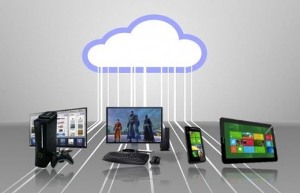We know Nvidia for its powerful processors that run some of the most advanced smartphones, tablets and computers. Now the company is doing something new. In an exciting move, it has introduced the Grid Gaming System. The Gird is an extremely potent server that is created for the express purpose of cloud computing for smart TVs, smartphones, PCs and tablets. A lot of cloud gaming companies are excited about the prospect too and have signed up to be among the first to use Nvidia’s technology. You’ll recognize the big names here- Playcast, Cyber Cloud, G-cluster, Ubitus and Agawi.
Cloud gaming, also referred to as gaming on demand enables games to be streamed to your computer via the game company’s server or the operator’s server. That means the user doesn’t have to purchase a console and can still enjoy games of his or her choice. The user keys in commands that are processed in the server and the response is sent back immediately and the game continues in the same way. It goes without saying that you need a good internet speed for this but you also need a good server. And this is where Nvidia’s Grid Gaming System comes in.
Just like all the other products that the company makes, the Gird comes with amazing features. For instance, a single server can enable up to 24 high definition game streams. A Grid gaming system comprises 20 Grid servers in a single rack. This rack has the capacity to produce 36 times the amount of high definition quality game streams than that produced by the first lot of cloud gaming systems. Impressive indeed!
The gaming rack of the 20 Grid servers we discussed in the previous paragraph has the capability to pump out close to a whopping 200 teraflops of operations. If you need an idea of what that number means; just put together about 700 Xbox 360s and you’ll get a picture. This is some serious power to your gaming requirements.
Nvidia will face stiff competition from the likes of Gaikai and Onlive who’ve been around for a while now. But Nvidia has an edge given its reputation with computer graphics and the like. In fact, the server stack in the Grid is designed in such a way that it will optimize the computer graphics that games are filled with. In the future, given the way in which the technology is progressing, we’re hoping that it will be possible to move from one device to another, even as we play our game. So maybe we start on our phone and move on to our tablet or our PC in a smooth, seamless fashion. It is bound to happen, one day.
Right now, the Grid is being tried out in a phased manner and is sold to MSOs, OEMs and other partners. The Gird is not a new product for the company that is merely capitalizing and building on its gamer market, but the company has gone in for new infrastructure, a brand new graphics chip and services for its gaming company partners.
It seems like more excitement is in store for gamers.


